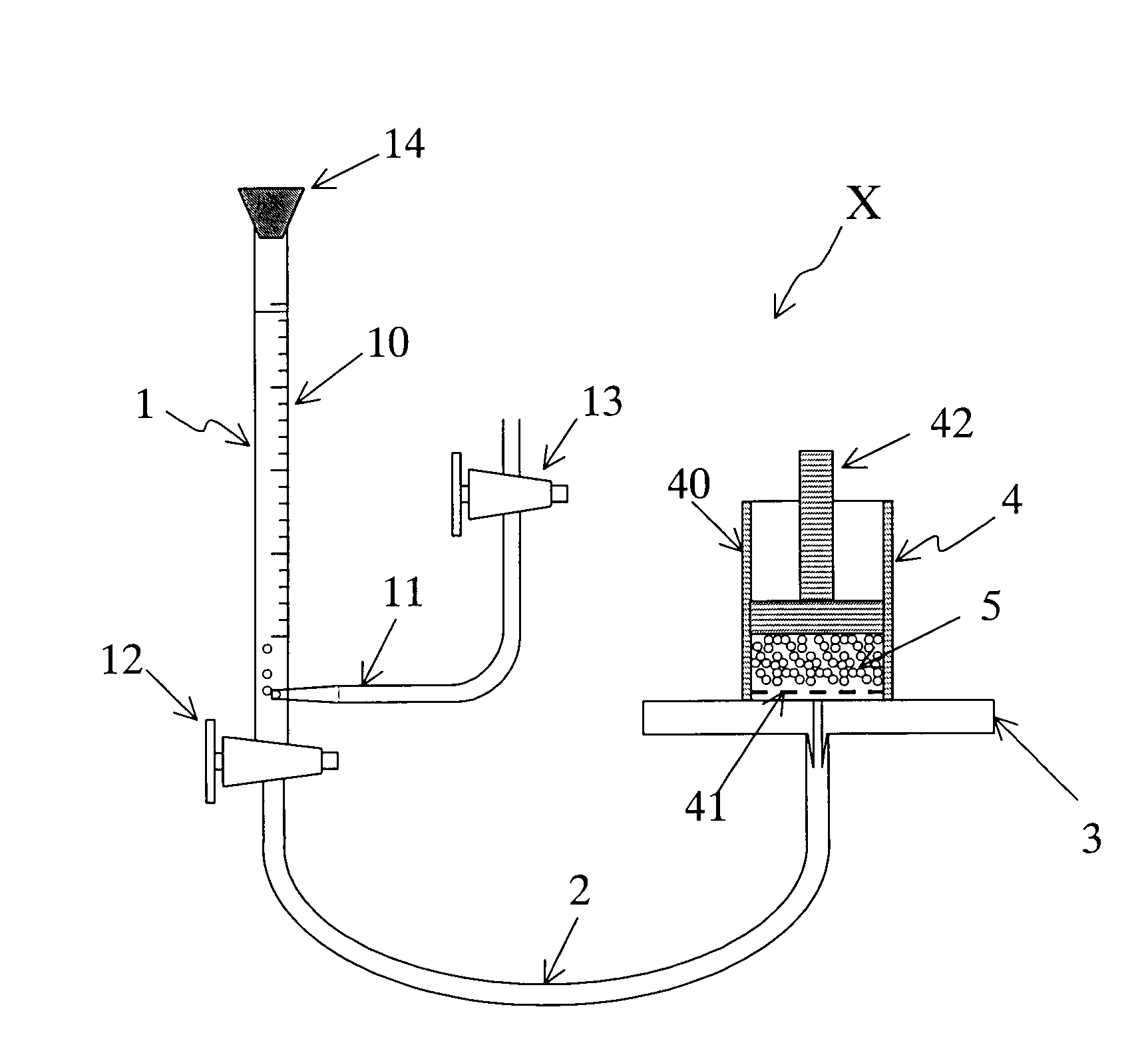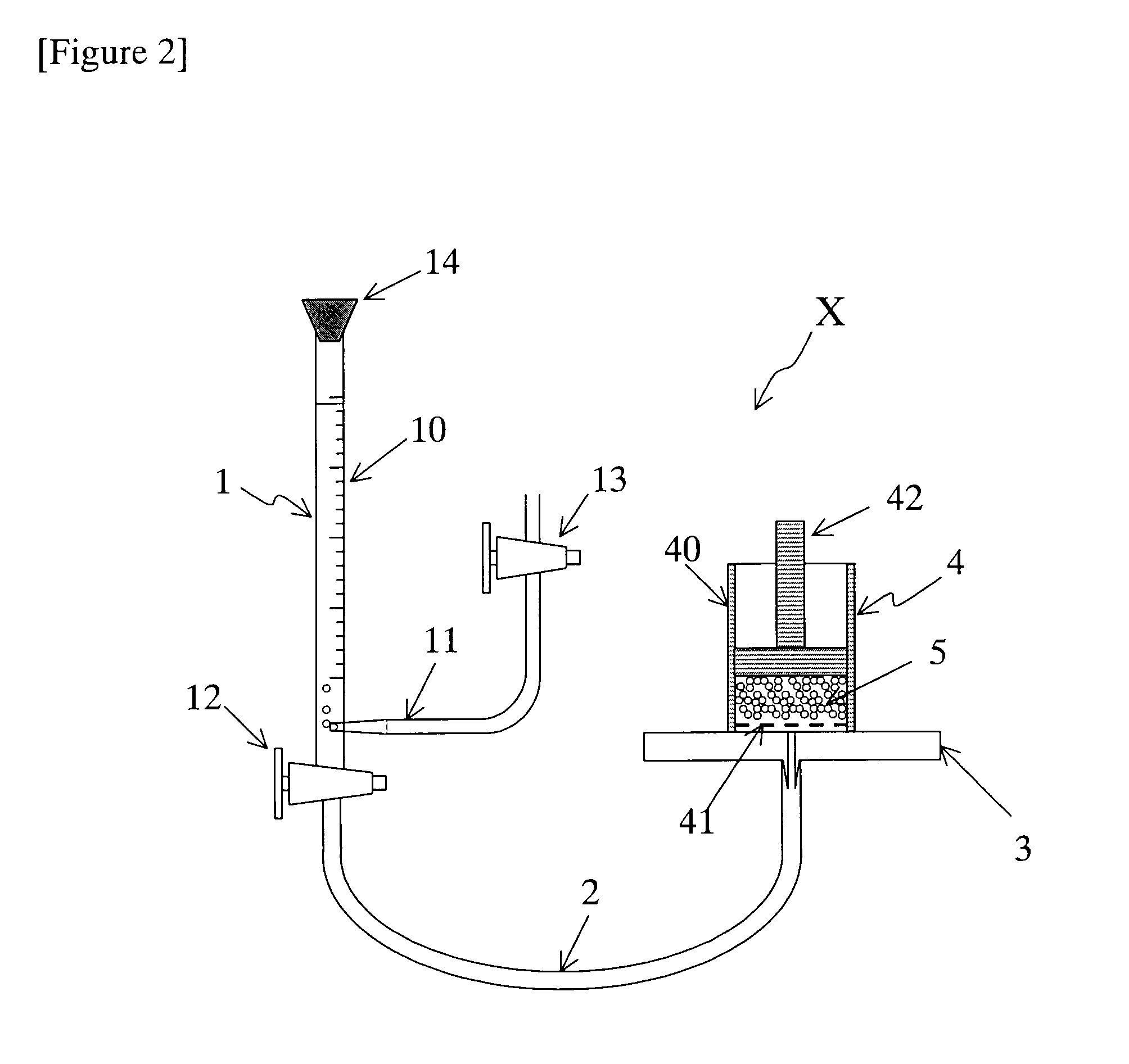Process for production of water-absorbable resin particle, and water-absorbable resin particle produced by the process
a technology of water-absorbable resin and process, which is applied in the direction of cellulosic plastic layered products, natural mineral layered products, transportation and packaging, etc., can solve the problems of less likely to obtain appropriate particle size suitable for a hygiene material, less likely to break down particles, and less likely to be produced. , to achieve the effect of reducing the properties of water-absorbable resin particles, high particle strength and excellent water absorption capacity
- Summary
- Abstract
- Description
- Claims
- Application Information
AI Technical Summary
Benefits of technology
Problems solved by technology
Method used
Image
Examples
example 1
[0060]A cylindrical round bottomed separable flask having an internal diameter of 100 mm, equipped with a reflux condenser, a dropping funnel, a nitrogen gas inlet tube, and a stirring blade having a two-step four pitched paddle blades having a blade diameter of 50 mm as a stirrer was prepared. This flask was charged with 500 ml of n-heptane, and 0.92 g of a sucrose stearate having an HLB of 3 (manufactured by Mitsubishi-Kagaku Foods Corporation, Ryoto sugar ester S-370) and 0.92 g of a maleic anhydride-modified ethylene-propylene copolymer (manufactured by Mitsui Chemicals, Inc., Hi-wax 1105A) were added thereto. The temperature was raised to 80° C. to dissolve the dispersion stabilizers, and thereafter the solution was cooled to 50° C.
[0061]On the other hand, an Erlenmeyer flask having a volume of 500 ml was charged with 92 g of an 80.5% by mass aqueous solution of acrylic acid, and 154.1 g of a 20.0% by mass aqueous sodium hydroxide was added dropwise thereto with cooling from ex...
example 2
[0067]The same procedures as in Example 1 were carried out except that the composition of the aqueous monomer solution during the second-step polymerization was changed to 174.8 g of an 80.5% by mass aqueous solution of acrylic acid, 237.4 g of a 24.7% by mass aqueous sodium hydroxide, 0.21 g of potassium persulfate and 17.5 mg of N,N′-methylenebisacrylamide, and further the amount of dehydration by a reflux of n-heptane after the second-step polymerization was changed to 313.9 g, and the amount of a 2% aqueous solution of ethylene glycol diglycidyl ether after the dehydration was changed to 10.7 g, to give 278.8 g of water-absorbent resin particles in an agglomerated form of the spherical particles. The secondary particles had a median particle size of 468 μm and a water content of 5.6%. The determination results of each property are shown in Table 1.
example 3
[0068]A cylindrical round bottomed separable flask having an internal diameter of 100 mm, equipped with a reflux condenser, a dropping funnel, a nitrogen gas inlet tube, and a stirring blade having a two-step four pitched paddle blades having a blade diameter of 50 mm as a stirrer was prepared. This flask was charged with 500 ml of n-heptane, and 0.92 g of a sucrose stearate having an HLB of 3 (manufactured by Mitsubishi-Kagaku Foods Corporation, Ryoto sugar ester S-370) and 0.92 g of a maleic anhydride-modified ethylene-propylene copolymer (manufactured by Mitsui Chemicals, Inc., Hi-wax 1105A) were added thereto. The temperature was raised to 80° C. to dissolve the dispersion stabilizers, and thereafter the solution was cooled to 50° C.
[0069]On the other hand, an Erlenmeyer flask having a volume of 500 ml was charged with 92 g of an 80.5% by mass aqueous solution of acrylic acid, and 154.1 g of a 20.0% by mass aqueous sodium hydroxide was added dropwise thereto with cooling from ex...
PUM
| Property | Measurement | Unit |
|---|---|---|
| median particle size | aaaaa | aaaaa |
| particle size | aaaaa | aaaaa |
| water absorption capacity | aaaaa | aaaaa |
Abstract
Description
Claims
Application Information
 Login to View More
Login to View More - R&D
- Intellectual Property
- Life Sciences
- Materials
- Tech Scout
- Unparalleled Data Quality
- Higher Quality Content
- 60% Fewer Hallucinations
Browse by: Latest US Patents, China's latest patents, Technical Efficacy Thesaurus, Application Domain, Technology Topic, Popular Technical Reports.
© 2025 PatSnap. All rights reserved.Legal|Privacy policy|Modern Slavery Act Transparency Statement|Sitemap|About US| Contact US: help@patsnap.com



